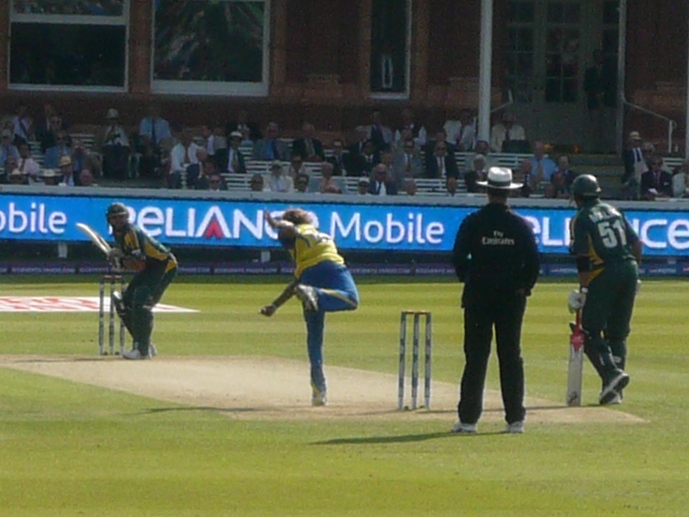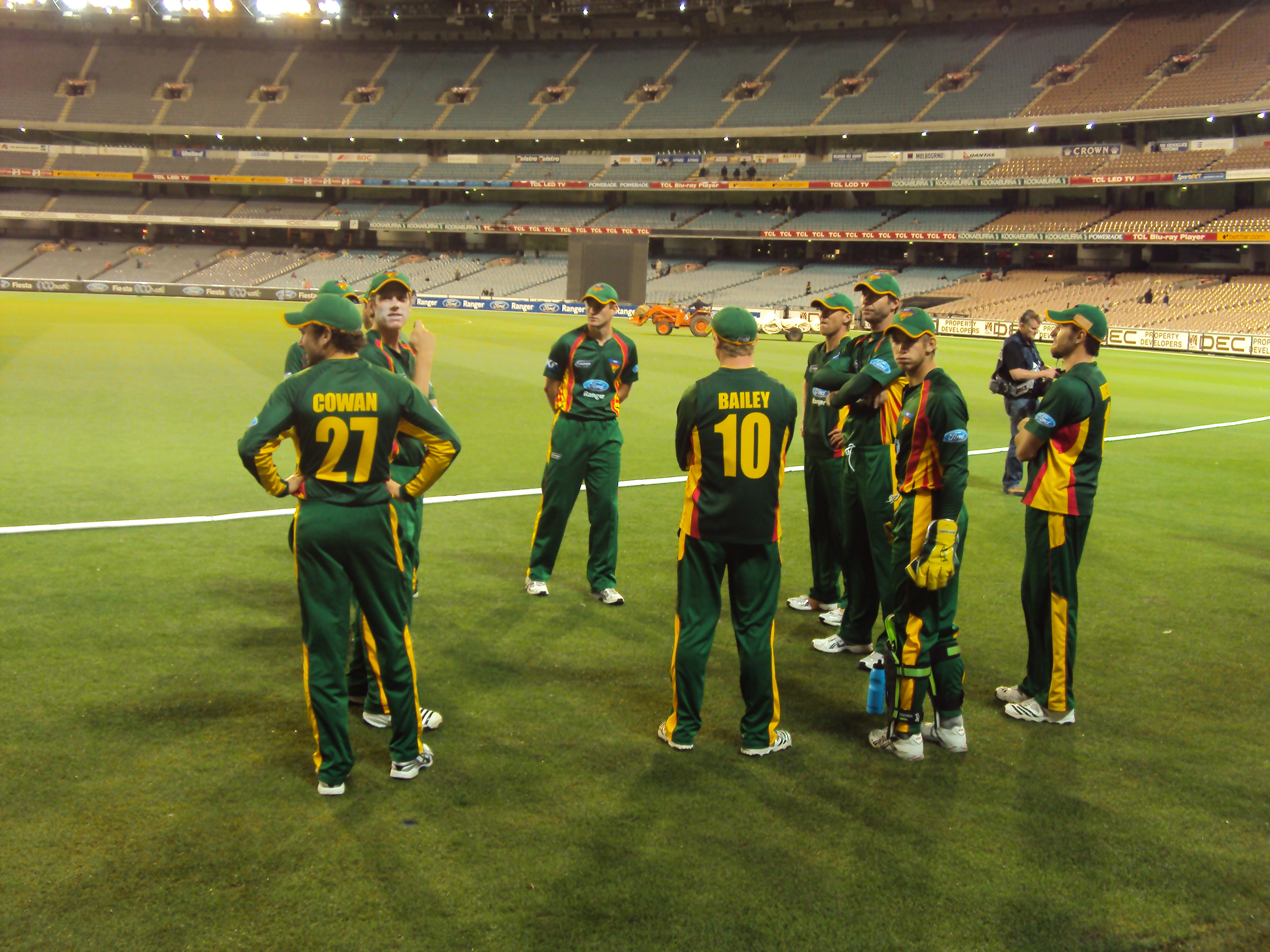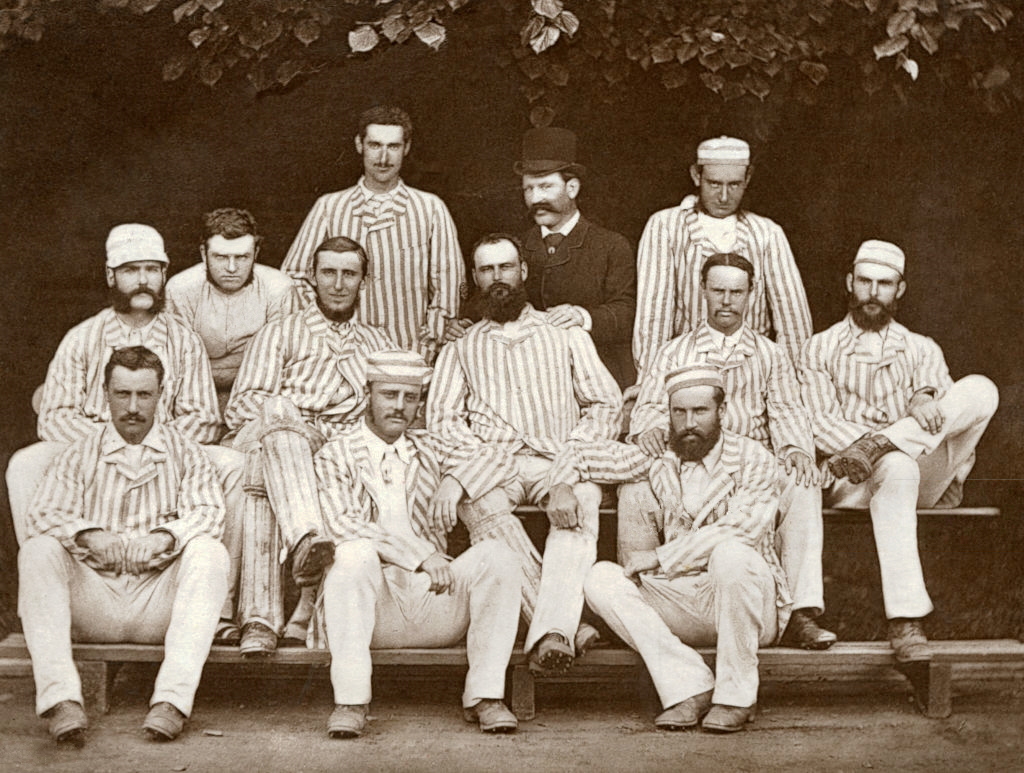|
John Arthur (cricketer)
John Lake Allen Arthur (7 April 1847 – 26 April 1877) was a first-class cricketer who played for Tasmania from 1866 to 1875. He was an opening batsman and a roundarm bowler, which was the more common form of bowling at the time. Arthur represented Tasmania in three first-class matches, and a single game for a Rest of Australia side in 1872/73. Despite not normally playing as a wicket-keeper and never taking a single first-class catch, he effected one stumping keeping wicket in his first first-class match. In the same match in 1868–69 he captained the Tasmanian side, although the match was lost and Tasmania were bowled out for just 18 in the first innings. He was invited to take part in the Australians' 1878 tour of England, but two days after receiving the letter of invitation he died suddenly in his hometown of Longford Longford () is the county town of County Longford in Ireland. It has a population of 10,008 according to the 2016 census. It is the biggest town in ... [...More Info...] [...Related Items...] OR: [Wikipedia] [Google] [Baidu] |
Longford, Tasmania
Longford is a town in the northern midlands of Tasmania, Australia. It lies 145 m above sea level at the convergence of the Macquarie River and the South Esk River, 21 km south of Launceston and a 15-minute drive from the airport. It is just south of the Illawarra Road, a road connecting the Bass and Midland Highways. It has a population of 3,863 (2016 census) and is part of the Northern Midlands Council area. The region is predominantly agricultural, noted for wool, dairy produce and stock breeding. History Pre-European Settlement The Longford region was the traditional land of The Panninher (par-nin-her) clan of the North Midlands Nation. This clan was known as the Penny Royal Creek Tribe by colonials, named after the old European name for the Liffey River (Aboriginal: Tellerpangger). The Panninher occupied land from Drys Bluff to the Tamar, Evandale and south to the Conara region. The Norfolk Plains region was the site of hunting and the boundary of the Aborigina ... [...More Info...] [...Related Items...] OR: [Wikipedia] [Google] [Baidu] |
Van Diemen's Land
Van Diemen's Land was the colonial name of the island of Tasmania used by the British during the European exploration of Australia in the 19th century. A British settlement was established in Van Diemen's Land in 1803 before it became a separate colony in 1825. Its penal colonies became notorious destinations for the transportation of convicts due to the harsh environment, isolation and reputation for being inescapable. Macquarie Harbour and Port Arthur are among the most well-known penal settlements on the island. With the passing of the Australian Constitutions Act 1850, Van Diemen's Land (along with New South Wales, Queensland, South Australia, Victoria, and Western Australia) was granted responsible self-government with its own elected representative and parliament. On 1 January 1856, the colony of Van Diemen's Land was officially changed to Tasmania. The last penal settlement was closed in Tasmania in 1877. Toponym The island was named in honour of Anthony van Die ... [...More Info...] [...Related Items...] OR: [Wikipedia] [Google] [Baidu] |
All Rounder
An all-rounder is a cricketer who regularly performs well at both batting and bowling. Although all bowlers must bat and quite a handful of batsmen do bowl occasionally, most players are skilled in only one of the two disciplines and are considered specialists. Some wicket-keepers have the skills of a specialist batter and have been referred to as all-rounders, but the term ''wicket-keeper-batter'' is more commonly applied to them, even if they are substitute wicket keepers who also bowl. Definition There is no precise qualification for a player to be considered an all-rounder and use of the term tends to be subjective. The generally accepted criterion is that a "genuine all-rounder" is someone whose batting or bowling skills, considered alone, would be good enough to win him/her a place in the team. Another definition of a "genuine all-rounder" is a player who can through both batting and bowling (though not necessarily both in the same match), consistently "win matches for th ... [...More Info...] [...Related Items...] OR: [Wikipedia] [Google] [Baidu] |
Roundarm Bowling
In cricket, roundarm bowling is a bowling style that was introduced in the first quarter of the 19th century and largely superseded underarm bowling by the 1830s. Using a roundarm action, the bowlers extend their arm about 90 degrees from their body at the point where they release the ball. Roundarm fell into decline after 1864 when the current style of overarm bowling was legalised, although W. G. Grace continued to use it to the end of his career. Origin The spread of roundarm in the 1820s was a natural reaction to the growing predominance of batsmen over the age-old underarm style of bowling. Its adherents argued that the legalisation of roundarm was essential to restore the balance between batting and bowling. However, high-scoring matches were still comparatively rare owing to vagaries in pitch conditions. The idea of roundarm is sometimes attributed to Christiana Willes, sister of Kent cricketer John Willes. The story goes that when bowling to her brother in the garden a ... [...More Info...] [...Related Items...] OR: [Wikipedia] [Google] [Baidu] |
Tasmanian Tigers
The Tasmanian cricket team, nicknamed the Tigers, represents the Australian state of Tasmania in cricket. They compete annually in the Australian domestic senior men's cricket season, which consists of the first-class Sheffield Shield and the limited overs Matador BBQs One-Day Cup. Tasmania played in the first first-class cricket match in Australia against Victoria in 1851, which they won by three wickets. Despite winning their first match, and producing many fine cricketers in the late 19th century, Tasmania was overlooked when the participants in Australian first-class tournament known as the Sheffield Shield were chosen in 1892. For nearly eighty years the Tasmanian side played an average of only two or three first-class matches per year, usually against one of the mainland Australian teams, or warm-up matches against a touring international test team. Tasmania were finally admitted to regular competitions when they became a founding member of the Gillette Cup domestic o ... [...More Info...] [...Related Items...] OR: [Wikipedia] [Google] [Baidu] |
First-class Cricket
First-class cricket, along with List A cricket and Twenty20 cricket, is one of the highest-standard forms of cricket. A first-class match is one of three or more days' scheduled duration between two sides of eleven players each and is officially adjudged to be worthy of the status by virtue of the standard of the competing teams. Matches must allow for the teams to play two innings each, although in practice a team might play only one innings or none at all. The etymology of "first-class cricket" is unknown, but it was used loosely before it acquired official status in 1895, following a meeting of leading English clubs. At a meeting of the Imperial Cricket Conference (ICC) in 1947, it was formally defined on a global basis. A significant omission of the ICC ruling was any attempt to define first-class cricket retrospectively. That has left historians, and especially statisticians, with the problem of how to categorise earlier matches, especially those played in Great Britain be ... [...More Info...] [...Related Items...] OR: [Wikipedia] [Google] [Baidu] |
First-class Cricket
First-class cricket, along with List A cricket and Twenty20 cricket, is one of the highest-standard forms of cricket. A first-class match is one of three or more days' scheduled duration between two sides of eleven players each and is officially adjudged to be worthy of the status by virtue of the standard of the competing teams. Matches must allow for the teams to play two innings each, although in practice a team might play only one innings or none at all. The etymology of "first-class cricket" is unknown, but it was used loosely before it acquired official status in 1895, following a meeting of leading English clubs. At a meeting of the Imperial Cricket Conference (ICC) in 1947, it was formally defined on a global basis. A significant omission of the ICC ruling was any attempt to define first-class cricket retrospectively. That has left historians, and especially statisticians, with the problem of how to categorise earlier matches, especially those played in Great Britain be ... [...More Info...] [...Related Items...] OR: [Wikipedia] [Google] [Baidu] |
Tasmania Cricket Team
The Tasmanian cricket team, nicknamed the Tigers, represents the Australian state of Tasmania in cricket. They compete annually in the Australian domestic senior men's cricket season, which consists of the first-class Sheffield Shield and the limited overs Matador BBQs One-Day Cup. Tasmania played in the first first-class cricket match in Australia against Victoria in 1851, which they won by three wickets. Despite winning their first match, and producing many fine cricketers in the late 19th century, Tasmania was overlooked when the participants in Australian first-class tournament known as the Sheffield Shield were chosen in 1892. For nearly eighty years the Tasmanian side played an average of only two or three first-class matches per year, usually against one of the mainland Australian teams, or warm-up matches against a touring international test team. Tasmania were finally admitted to regular competitions when they became a founding member of the Gillette Cup domestic o ... [...More Info...] [...Related Items...] OR: [Wikipedia] [Google] [Baidu] |
Tasmanian Cricket Captains
The Australian state of Tasmania has one of the longest traditions of cricket-playing in the southern hemisphere. Cricket is recorded as having first been played in Tasmania very shortly after the arrival of British settlers on the island on 12 September 1803, however it wasn't until nearly fifty years later that First-class cricket was to be played there. Despite the long wait since the foundation of the colony, Tasmania played in the first ever first-class cricket match in Australia, which was played on 11 February and 12 February 1851, against Victoria, with Tasmania emerging victorious by 3 wickets. For that first match, Tasmania was captained by John Marshall. Following that first ever First-class match Tasmania endured a long period of isolation, in which the island's cricketers had to content themselves with occasional First-class matches against other colonies, primarily Victoria, and touring or representative sides. Australia's elite First-class cricket competition, t ... [...More Info...] [...Related Items...] OR: [Wikipedia] [Google] [Baidu] |
Australian Cricket Team In England And North America In 1878
From May to September in 1878, an Australia national cricket team, Australian cricket team made the inaugural first-class cricket, first-class tour of England by a representative overseas side. In October, the Australians played additional matches in the USA and Canada on their return journey. The tour followed one made by an England cricket team, England team to Australia in English cricket team in Australia in 1876–77, 1876–77, during which the first matches retrospectively given Test cricket, Test match status were played. None of the 1878 matches had international status, nevertheless the tour proved to be such an outstanding financial and sporting success that the future of international cricket was assured. The Australian team was managed by John Conway (cricketer), John Conway and captained by Dave Gregory (cricketer), Dave Gregory. William Gibbes, who was a non-player, acted as the team's assistant-manager and secretary. Conway was a journalist from Geelong, Victoria ( ... [...More Info...] [...Related Items...] OR: [Wikipedia] [Google] [Baidu] |
1847 Births
Events January–March * January 4 – Samuel Colt sells his first revolver pistol to the U.S. government. * January 13 – The Treaty of Cahuenga ends fighting in the Mexican–American War in California. * January 16 – John C. Frémont is appointed Governor of the new California Territory. * January 17 – St. Anthony Hall fraternity is founded at Columbia University, New York City. * January 30 – Yerba Buena, California, is renamed San Francisco. * February 5 – A rescue effort, called the First Relief, leaves Johnson's Ranch to save the ill-fated Donner Party (California-bound emigrants who became snowbound in the Sierra Nevada earlier this winter; some have resorted to survival by cannibalism). * February 22 – Mexican–American War: Battle of Buena Vista – 5,000 American troops under General Zachary Taylor use their superiority in artillery to drive off 15,000 Mexican troops under Antonio López de Santa Anna, defeating the Mexicans the next da ... [...More Info...] [...Related Items...] OR: [Wikipedia] [Google] [Baidu] |
1877 Deaths
Events January–March * January 1 – Queen Victoria is proclaimed ''Empress of India'' by the ''Royal Titles Act 1876'', introduced by Benjamin Disraeli, the Prime Minister of the United Kingdom . * January 8 – Great Sioux War of 1876 – Battle of Wolf Mountain: Crazy Horse and his warriors fight their last battle with the United States Cavalry in Montana. * January 20 – The Conference of Constantinople ends, with Ottoman Turkey rejecting proposals of internal reform and Balkan provisions. * January 29 – The Satsuma Rebellion, a revolt of disaffected samurai in Japan, breaks out against the new imperial government; it lasts until September, when it is crushed by a professionally led army of draftees. * February 17 – Major General Charles George Gordon of the British Army is appointed Governor-General of the Sudan. * March – ''The Nineteenth Century'' magazine is founded in London. * March 2 – Compromise of 1877: ... [...More Info...] [...Related Items...] OR: [Wikipedia] [Google] [Baidu] |






